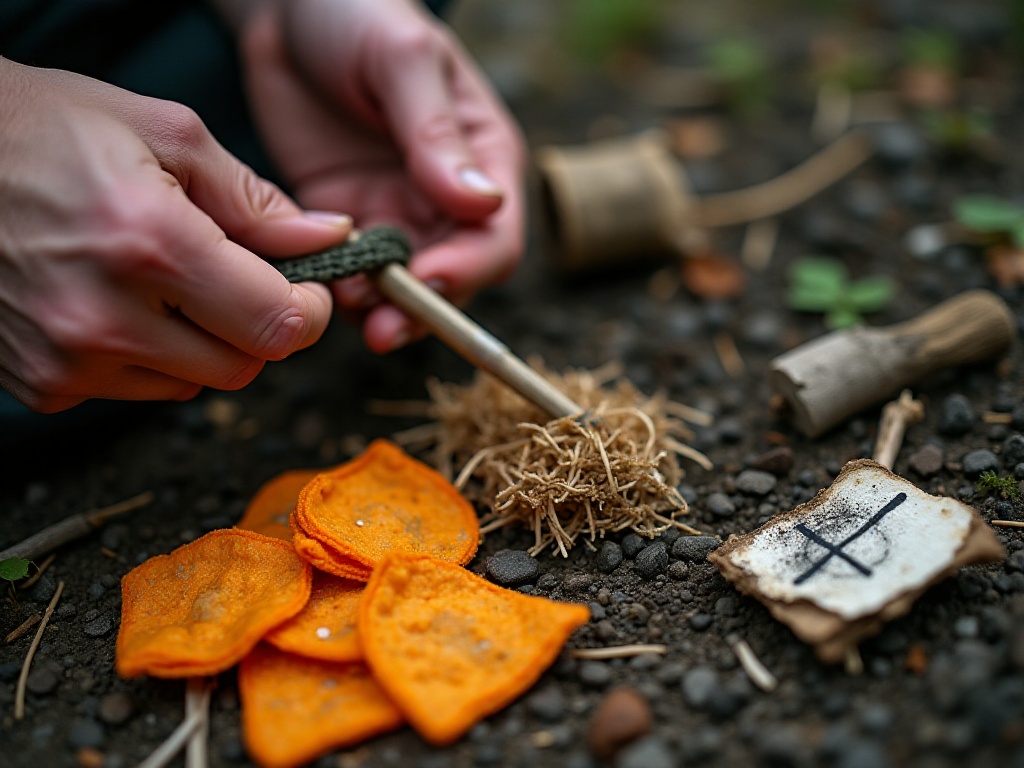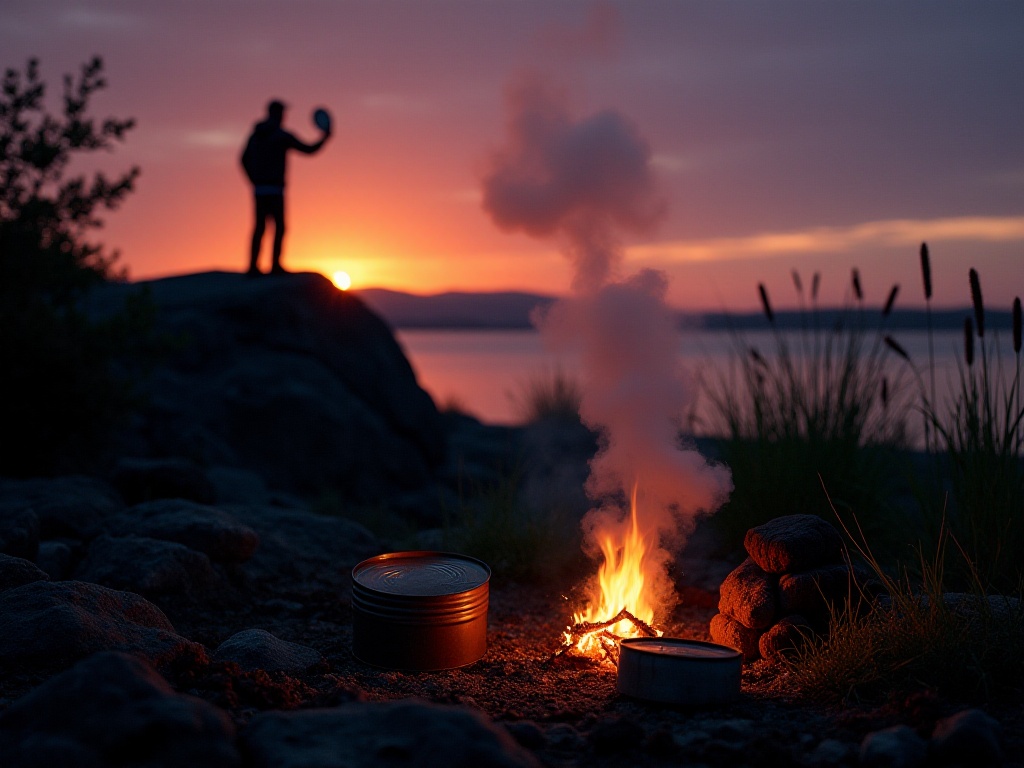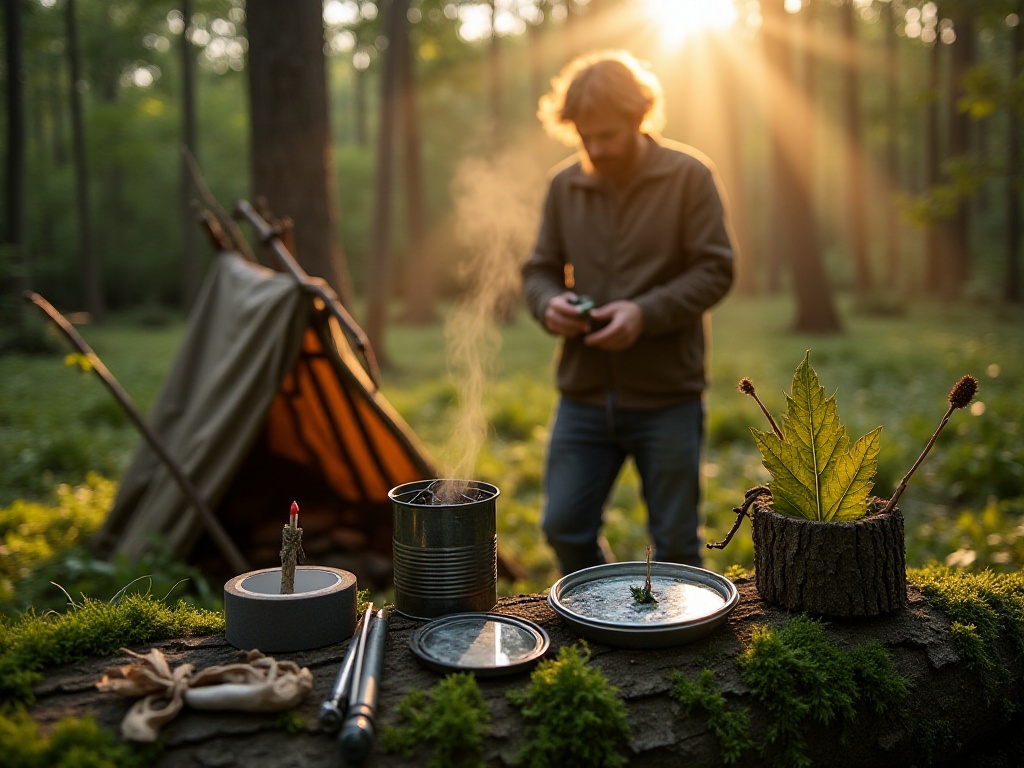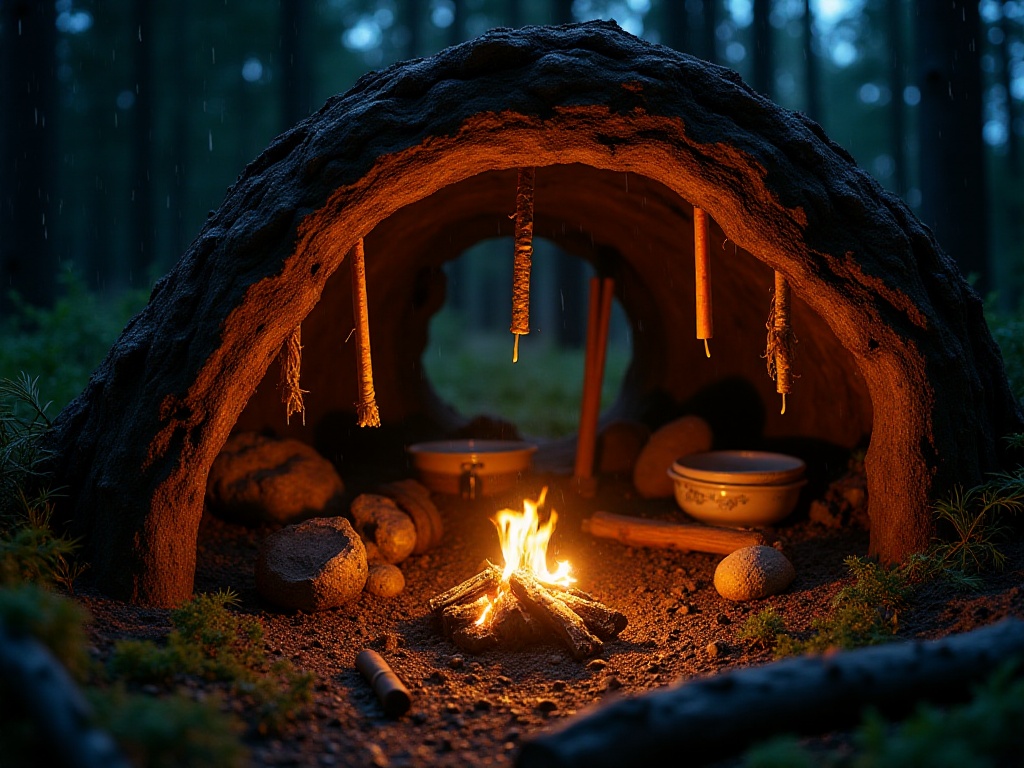Introduction
As a post-95s generation outdoor enthusiast who has loved adventure since childhood, I often go camping with friends. Honestly, while my parents always nag about preparing this and that before each trip, many common everyday items can actually be incredibly useful in the wilderness. What shocked me most was that even Doritos, those addictively snackable chips we casually buy, can be used to start a fire!
Today I want to share some of the fascinating techniques I've accumulated over years of wilderness adventures. Truthfully, these skills have been incredibly helpful in many critical moments. I remember one time in the mountains, if it weren't for these tricks, our team might have been in serious trouble.
Magical Small Items
When people think of essential wilderness survival gear, many immediately think of buying lots of professional equipment like full hiking suits, waterproof hiking boots, and professional tents. However, many ordinary items from daily life can become lifesaving tools in the wilderness if you know how to use them.
Take multi-purpose tape for example - it's like a wilderness survival superhero. Once when hiking with friends, it suddenly started pouring rain. We finally found a cave for shelter, only to discover our tent had several tears from tree branches. Everyone thought we were doomed to get soaked. But the roll of multi-purpose tape I had brought immediately came in handy.
I fixed the tent in no time - it was incredibly cool! Moreover, this tape has many other uses. Once when my teammate accidentally got cut by a rock, we used the tape for temporary bandaging. Another time when we were short on water bottles, I folded the tape to make a simple cup - it looked crude but worked!
Bandages are also amazing tools. They're not just for covering small wounds but can prevent blisters too. Before setting out, I always put bandages on blister-prone areas like heels and thumbs, which keeps me comfortable all day. When backpack straps chafe shoulders, adding bandages helps a lot.
Then there are hair clips - don't think they're just for styling hair. In the wilderness, they can become makeshift fish hooks. Just straighten the clip and bend the end slightly, and you can catch small fish. While you might not catch big fish, having something to eat in an emergency is not bad.

Fire Starting Secrets
When it comes to essential wilderness survival skills, fire starting tops the list. While many people bring lighters or waterproof matches nowadays, what happens if they run out or get wet? That's why knowing some special fire-starting techniques is crucial.
Remember the Doritos mentioned at the beginning? Yes, those addictively delicious chips. They're not just for satisfying hunger in the wilderness - they make excellent fire starters. Why? Because Doritos contain lots of oil and seasonings that are highly flammable. I was amazed when I first learned this trick and tried it myself - it really lights up instantly!
However, I must warn everyone to be extra careful when using Doritos as fire starters. First crush the chips and spread them evenly over prepared kindling. When lighting, be careful to control the fire - don't let it get too intense too quickly.
Besides Doritos, many everyday items can become unexpected fire starters. Hand sanitizer, for instance, becomes a super effective accelerant due to its alcohol content. Once when caught in the rain, everything was soaked, but I finally managed to start a fire using the hand sanitizer I had brought.
Speaking of fire starting, my favorite technique uses birthday candles. You know why? Those prank candles that won't blow out. While these candles might be frustrating at parties, this property becomes their greatest advantage in the wilderness. Because they keep burning, they give you plenty of time to prepare other tinder.
Another particularly useful technique involves toilet paper. Many people might not know that toilet paper makes excellent tinder. Especially in damp environments, if you can find dry toilet paper, it's a lifesaver. I usually keep some toilet paper separately in a waterproof bag specifically for fire starting.

Navigation and Rescue
Getting lost in the wilderness is definitely one of the scariest things. I remember once when our group was wandering in the mountains and couldn't find our way back. No phone signal, compass lost somewhere - it was really frightening.
Fortunately, we knew some basic methods for direction finding. Like using leaves as temporary compasses: after finding a relatively calm water surface, gently place an intact leaf on it. The leaf will drift with the water flow, helping you roughly determine direction. While this method isn't 100% accurate, it's better than walking blindly in emergencies.
Besides using leaves, observing tree growth patterns can help determine direction. In the Northern Hemisphere, the sunny side of trees (the south side) usually has more abundant foliage and drier bark. The shaded side (north side) has relatively sparse foliage and might have moss growing on the bark.
Ant nests can also indicate direction. Generally, ants prefer building nests on the south side of trees or large rocks because it's warmer. So the location of ant nests can roughly indicate north-south direction.
On sunny days, you can use a watch to determine direction. Lay the watch flat, point the hour hand at the sun, then the line bisecting the angle between the hour hand and 12 o'clock points south. Note when using this method: if it's daylight saving time, adjust back to standard time.
When facing emergencies in the wilderness and needing rescue, getting rescuers to spot you is also a skill. If you have a mirror or other reflective items, you can use sunlight to send distress signals. The international distress signal is sending three consecutive signals, pausing, then repeating.
Equipment Maintenance
Regarding equipment maintenance, wet shoes are the most troublesome problem. Especially when camping, having shoes soaked by rain is a nightmare. Wet shoes aren't just uncomfortable to wear but can lead to athlete's foot and blisters.
I discovered a particularly effective method using dirty clothes stuffed into shoes. Yes, you heard right - those already-worn clothes. The fibers in these clothes effectively absorb moisture from shoes, speeding up drying. And since dirty clothes need washing anyway, using them this way isn't wasteful.
Besides clothes, newspaper is also a good choice. If you can find newspaper, crumpling it and stuffing it in shoes works well too. Just remember to change it frequently, as wet newspaper becomes very fragile.
For tent maintenance, I have a special secret. Always completely dry the tent before packing it away. If there's no time to dry it on-site, set it up immediately at home to dry. This prevents mold and extends the tent's lifespan.
Backpacks also need regular maintenance. After each use, clean the backpack thoroughly inside and out, especially corners where dirt accumulates. If the backpack has a waterproof coating, avoid direct sunlight exposure as strong sunlight can damage the coating.

Resource Utilization
In the wilderness, many natural items can be incredibly useful. Take tree bark - it's nature's miraculous material. I once wove a decent rope from birch bark. While maybe not as good as professional climbing rope, it's definitely sufficient for emergencies.
Moreover, bark can be used to build temporary shelters. Especially in rain, a few large pieces of bark overhead can block most rainwater. Once when trapped in the mountains, we built a simple shelter with bark and successfully weathered a storm.
Speaking of fish skin, it's truly valuable. During a wilderness expedition, I learned an amazing technique from a local guide: when dried, fish skin becomes very rough and can be used as natural sandpaper. This trick is especially useful when needing to sand wood or other materials.
Wild plants are also treasure troves. Dandelions, for instance, aren't just edible - their stem fibers can be woven into rope. Nettles might sting, but their fibers are particularly strong and can also make rope. Of course, before using any plants, make sure you can identify them accurately to avoid poisonous ones.
Conclusion
These wilderness survival skills might seem simple, but each is battle-tested. I remember an old outdoor enthusiast saying: in the wilderness, adaptability often matters more than expensive equipment. This really hits the mark.
Through years of outdoor experiences, I've deeply realized: wilderness survival isn't about being incredibly tough, but about using wisdom to adapt to the environment and creativity to solve problems. Each trip brings new challenges and teaches new skills. That's the most interesting part of outdoor activities - you never know what situation you'll face next, but mastering these basic skills helps you handle various emergencies with confidence.
So next time you're standing in an outdoor store wondering what equipment to buy, consider this: maybe the solution is in the simple items around you. After all, true wilderness survival experts aren't made by accumulating equipment, but by mastering these seemingly simple yet incredibly practical skills.







